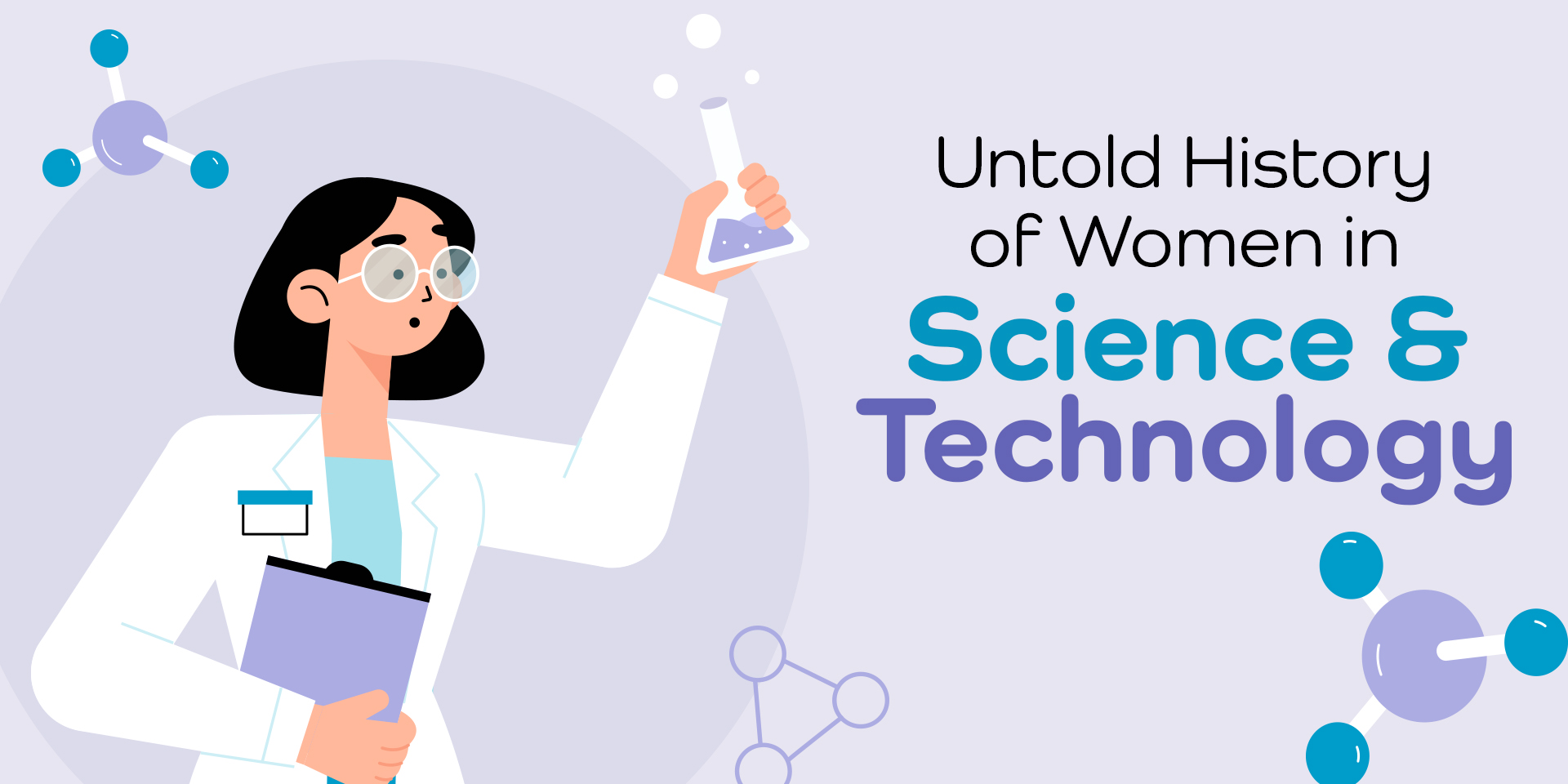Women in STEM are around 43% of the total graduates when it comes to education. However, only 14% of these women in STEM pursue a career in science and technology going ahead. Many women drop out after studies due to many reasons like family pressure, workplace discrimination, lack of support from parents and teachers, social bias, lack of famous women in STEM as role models, and many others.
If someone asked you to name some prominent Indian scientists, which names would come to your mind?
- Homi Bhabha
- C.V. Raman
- Jagdish Chandra Bose
- A.P.J. Abdul Kalam
- S. Chandrashekhar
- Srinivasa Ramanujan
- Har Gobind Khorana
It would be a rarity to think about famous women researchers or women in science and technology who have contributed immensely towards scientific development. The fact is that a career in science is dominated by men. However, it does not mean that there are no women researchers or Indian women in STEM.
Here are some famous women in STEM who have already become successful and created an impact in the field of science and technology. They have left behind a great legacy for other women in STEM to follow their footsteps.
Janaki Ammal (1897 – 1984)
- She was an Anglo-Indian botanist.
- In her career in scientific research, her most noteworthy work was on eggplants and sugarcane.
- Janaki received the Padma Shri in 1977.
- She reorganized the Botanical Survey of India (BSI) and also served as its Director General.
- The Magnolia Kobus Janaki Ammal is a flower named after her.
Kamala Sohonie (1912 – 1998)
- She was an Indian biochemist and the first woman to receive a Ph.D. (Doctorate) in a scientific discipline.
- Kamala completed her M.Sc. degree with distinction at the IISc, the best institution in India for scientific studies during that time.
- She also earned a research scholarship for herself at the Cambridge Institute in the United Kingdom.
- While working at the Cambridge Institute, she discovered the enzyme ‘Cytochrome C’ in the plant cells. This enzyme was responsible for oxidation in plant cells and was a unique and original discovery.
- On returning to India, she was appointed as the Assistant Director of Nutrition Research Lab in Coonoor.
- She conducted research on the role of vitamins in nutrition.
- In India, she researched on varieties of pulse and the nutritional value of the drink named ‘Neera’. Both of these were essential to tackle malnutrition in India.
Asima Chatterjee (1917-2006)
- She was an Indian chemist known for her work in the field of phytochemistry and organic chemistry.
- Her most notable work was the research carried out on Vinca alkaloids and development of many anti-epileptic and antimalarial drugs from plants.
- She was the first Indian female recipient of Shanti Swaroop Bhatnagar award, the most prestigious Science award in India.
Anna Mani (1918 – 2001)
- Popularly known as ‘The Weather Woman of India’.
- She was an Indian Physicist and Meteorologist.
- She was known for her significant contributions in the field of Meteorological Instrumentation.
- She was the Deputy Director General of Indian Meteorological Department from 1969 to 1976.
- Her career in science mainly involved work in designing and enhancing weather instruments.
- She was the pioneer and led the team that developed India’s Ozonesonde, an apparatus for measuring atmospheric ozone. This development added India in the list of countries that could do so at that time.
Archana Sharma (1932-2008)
- She was a famous botanist in India, specializing in genetic techniques and chromosomes.
- She studied the structure of chromosomes and provided a standard chromosome labeling technique.
- She also contributed towards the taxonomy of flowering plants.
- In her career in science, she was also the President of Indian Botanical Society from 1986 to 1987.
- She was the second Indian female recipient of the Shanti Swaroop Bhatnagar award in 1975.
- She founded ‘An International Journal of Cytology and Allied Topics – The Nucleus’ with the help of her husband.
Rajeshwari Chatterjee (1922-2010)
- She is the first female engineer from Karnataka.
- She is known for her remarkable contribution in the field of microwave engineering in India.
- She was a professor at the IISc and later became the chairperson of the department of Electrical Communication Engineering (ECE) in IISc Bangalore.
- She has 100+ research papers and 7 books published to her credit.
The success stories of so many Indian women in STEM serves as an inspiration for the women of today to come forward and go for a career in scientific research. Active participation of women in STEM is crucial for science and technology. The STEM field calls for feminism which will directly reflect the advancement of women by breaking the restraints of the society. Women empowerment in science and technology is the need of the hour. It is time to bring about a change in the underrepresentation of women in STEM. Involvement of women in science and technology has the real potential to transform the world.


